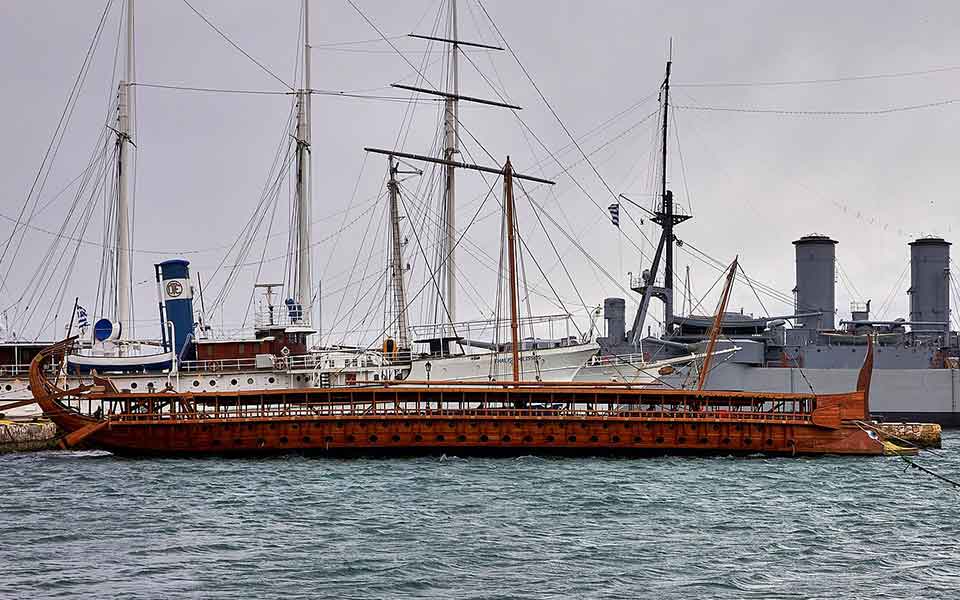Flisvos is a charming coastal neighborhood in Palaio Faliro, located south of the capital on the Athenian Riviera. Easily reached by car, bus, or tram from the city center, this picturesque area is a popular hangout for locals and tourists alike, drawn by its scenic park, promenade, and many cultural attractions.
One such highlight is the marina overlooking Phaleron Bay, filled with luxury yachts and sailboats. Visitors can enjoy leisurely strolls along the glitzy waterfront promenade, taking in views of the Saronic Gulf, and stopping for a drink or a meal at one of the many cafes and restaurants.
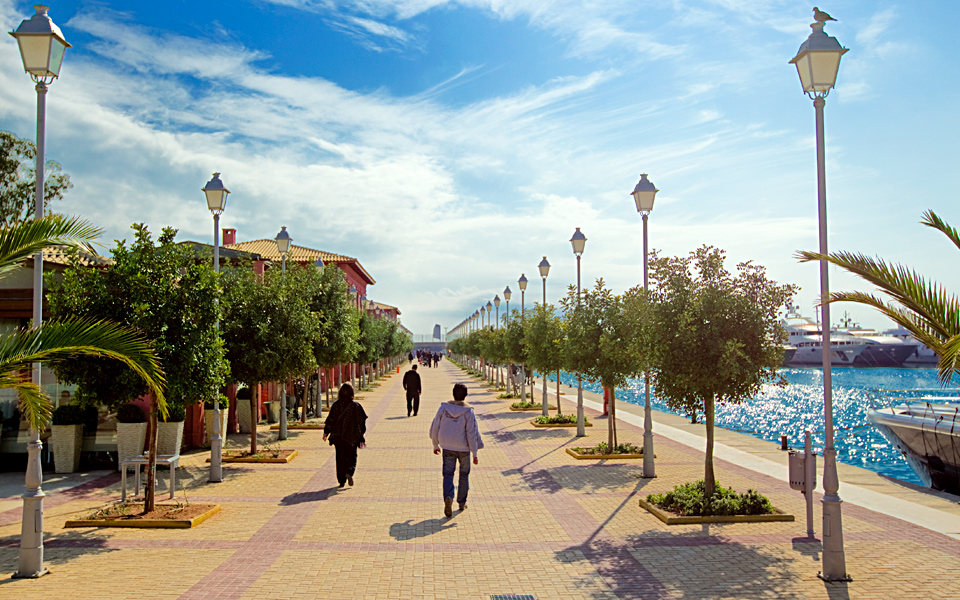
© Perikles Merakos
Hellenic Maritime Heritage Park
At Trocadero quay of the marina, immediately adjacent the car park, is the Hellenic Maritime Heritage Park, home to some of Greece’s most famous naval vessels. For maritime history buffs and anyone who enjoys exploring historic ships, this criminally overlooked cultural attraction, a stone’s throw from Athens, is a must visit.
There are currently five ships and sailboats moored alongside Trocadero quay (Pier E), three of which serve as floating museums. The main attraction is the legendary battleship “Georgios Averof,” a former flagship of the Hellenic Navy. which played a critical role in Greece’s military conflicts in the first half of the 20th century, including the Balkan Wars (1912-1913) and the two World Wars (more below). A guided tour of its decks, curated with an impressive collection of historic photographs, nautical charts and instruments, and other artifacts related to its long operational history, provide visitors with a fascinating insight into life onboard a warship of the time.
Another highlight is the “Olympias,” a modern replica of an ancient Athenian trireme from the 5th century BC, located next to the marina. Built in Piraeus in the mid-1980s, and based on the drawings of British naval architect John Coates (1922-2010), the Olympias served as an archaeological experiment, designed to test the capabilities of oared warships as described in the historical accounts. Like the Averof, the Olympias is a ceremonially commissioned ship in the Hellenic Navy.
Also alongside Trocadero quay is the “Thalis Milissios,” the oldest cable ship in the world, and the only one to maintain its original engine room and a fully intact cable-mounting mechanism. Wrecked in 1909, this former US Government ship was restored and delivered to the Hellenic Telecommunications Organizaton in 1947, and used to lay and maintain underwater telephone cables between the Greek islands. Retiring in 1983, the vessel now serves as a floating museum, hosting exhibits that trace the evolution of 20th century telecommunication and maritime technology.
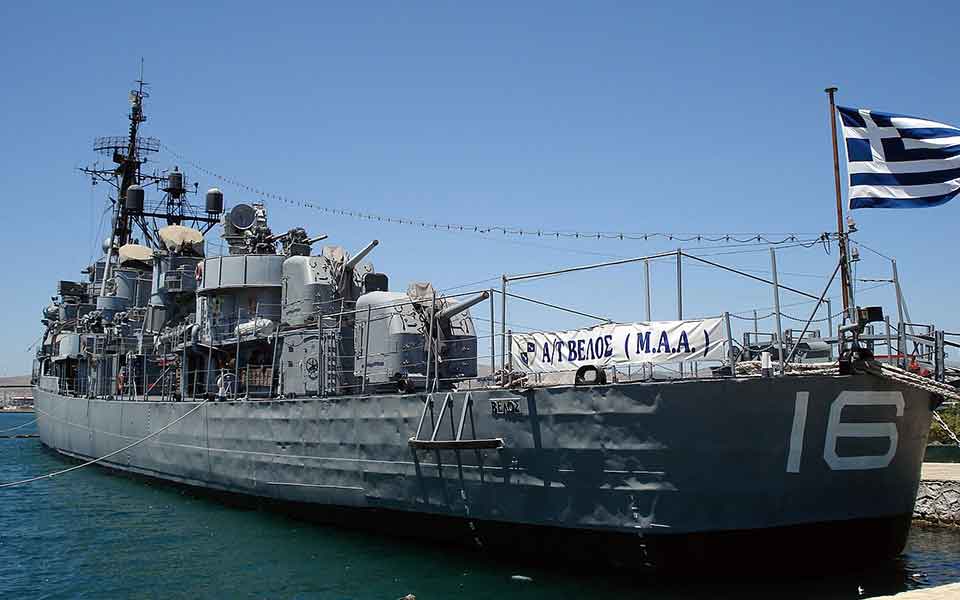
© Public domain
HS Velos and the Restoration of Democracy
Alongside the Thalis Milissios is the World War II-era destroyer HS Velos (“Arrow”), which originally saw service in the United States Navy as the USS Charrette. The ship transferred to the Hellenic Navy in 1959.
Velos is renowned in Greece as an enduring symbol of protest against the country’s military dictatorship, which ruled from 1967 to 1974. Under the command of Nikolaos Pappas (1930-2013), and with the universal support of the crew, the Velos withdrew from a large-scale NATO exercise in the central Mediterranean in May 1973 and sailed to Fiumicino in Italy, refusing to return to Greece. The mutiny proved a significant blow to the junta, and further galvanized international public opinion against ruling regime. In response, the regime stripped Commander Pappas of his citizenship.
Following the restoration of democracy in 1974, the officers and crew of the Velos were hailed for their anti-dictatorial actions and reinstated to active duty. Pappas went on to become an admiral, serving as chief of the Hellenic Navy General Staff from 1982 to his retirement in 1986.
Withdrawn from active service in 1991, HS Velos now serves as the Museum of the Struggle against the Dictatorship, housing an extensive archive of photographs and press material relating to the Hellenic Navy’s important contribution to the restoration of democracy.
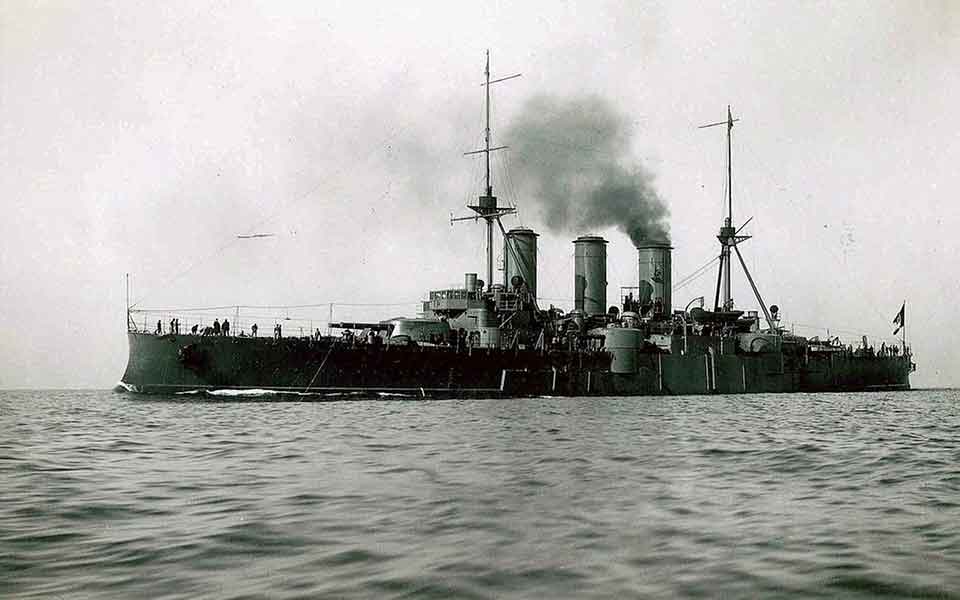
© Public domain
The Battleship G. Averof: Pride of the Hellenic Navy
The jewel in the crown of the Hellenic Heritage Park is undoubtedly the battleship Averof, which served as the Greek flagship for most of the first half of the 20th century. Classified as an “armored cruiser,” it is the only vessel of its type still in existence. A guided tour of the historic ship, which can be booked online, offers visitors an opportunity to explore the bridge and control room, the gun emplacements, the engine rooms, the onboard chapel of St. Nicholas, and the various living quarters of the officers and crew.
Laid down in 1907, the ship was initially built for the Italian Navy, at the Orlando Shipyards in Livorno. The Italian government, however, cancelled the order and decided to sell her. An immediate advance for one-third (c. 300,000 gold pound sterling) of the total value of the ship came from the bequest of a wealthy Greek merchant, Georgios Averof (1815-1899), who stipulated that twenty percent of his legacy be allocated for the construction of a training vessel for the Hellenic Naval Academy. The remainder of the funds were accumulated by the National Fleet Fund, with the enthusiastic support of the Greek diaspora.
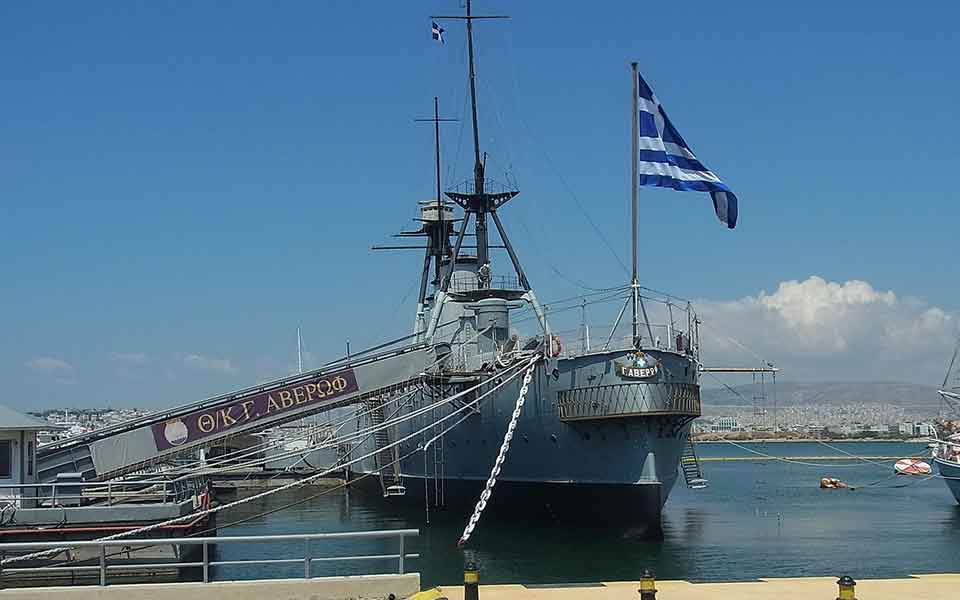
© Public domain
First launched in 1910, the newly-Christened “Georgios Averof” was one of the most advanced warships in the Mediterranean, especially among the navies of the Balkan League and the Ottoman empire. Featuring heavy armor, Italian engines, and powerful British-built guns, she immediately sailed to England to take part in the Coronation Naval Review of King George V. The Averof soon went on to play a crucial role in the Balkan Wars (1912-1913), scoring a series of spectacular victories against the Ottoman fleet in the Aegean, including, most famously, at the battles of Elli (December 3, 1912) and Lemnos (January 5, 1913). These actions effectively ended Ottoman naval ambitions in the Aegean.
The G. Averof went to serve in support of Allied operations in World War 1, and underwent a major refit in France in the mid 1920s, including the addition of modern anti-aircraft guns and improved fire-control equipment.
In World War II, the Averof’s crew famously disobeyed an order to scuttle the ship following the defeat of the Greek army in 1941, instead sailing to Crete, and then on to the British naval base at Alexandria, Egypt. From there, the ageing and technologically obsolete ship, too slow to operate alongside the faster and more advanced ships of Britain’s Royal Navy, went on to serve with distinction in the Indian Ocean, protecting convoys from German raiders disguised as merchant ships.
Instead of being scrapped following her decommissioning in 1952, the Hellenic Navy decided to transform the G. Averof into a floating museum, which first opened to the public in 1984. Today, it serves as a testament to the significance of naval power in Greek history, and the enduring legacy of Georgios Averof’s philanthropy.
Click here for a 3-D tour of the ship.
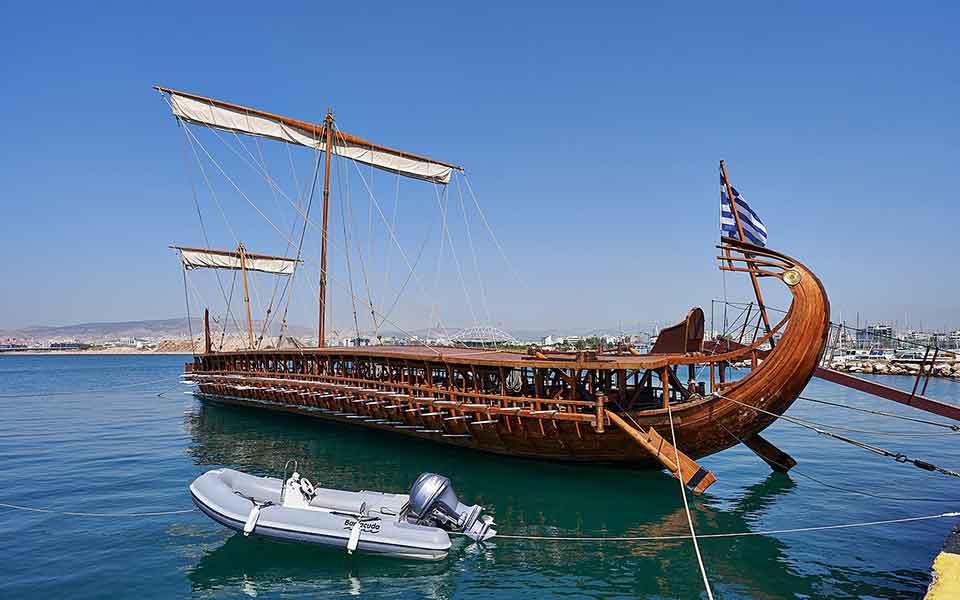
© Public domain
The Athenian Trireme
At the far end of Trocadero quay, next to Flisvos Marina, is the replica of the ancient Athenian trireme, Olympias, a reconstruction of the iconic warship that fought in the defense of Greece at the Battle of Salamis, in 480 BC.
Ceremonially commissioned in the Hellenic Navy 1987, the project to build a full-size replica of a trireme was spearheaded by naval architect John Coates and Cambridge University classicist John Sinclair Morrison (1913-2000). The end result was a remarkable feat of historical and maritime archaeology, offering key insights into oared warship design in Classical Greece.
The reconstruction was based on extensive research, ancient texts, and archaeological evidence of ship sheds. Morrison and his team scrutinized the ancient sources, including descriptions of triremes in Thucydides’ “History of the Peloponnesian War” and Xenophon’s “On the Athenian Constitution” to gather as much data as possible.
To match the ancient construction methods, the Olympias was built using wooden planks, primarily oak and pine, held together with wooden dowels and mortise-and-tenon joints. The shipbuilders employed bronze and copper fastenings to mimic the materials available in antiquity.
The Olympias was designed from the outset to be seaworthy in order to test its manoeuvrability, undergoing sea trials in the late 1980s and early 1990s. Designed with three banks of oars and manned by a crew of 170 rowers, the vessel achieved speeds of 9 knots (17km/h) and was able to perform a 180 degree turn in under one minute, giving researchers key insights into the naval tactics, speed, and manoeuvrability of ancient triremes.

